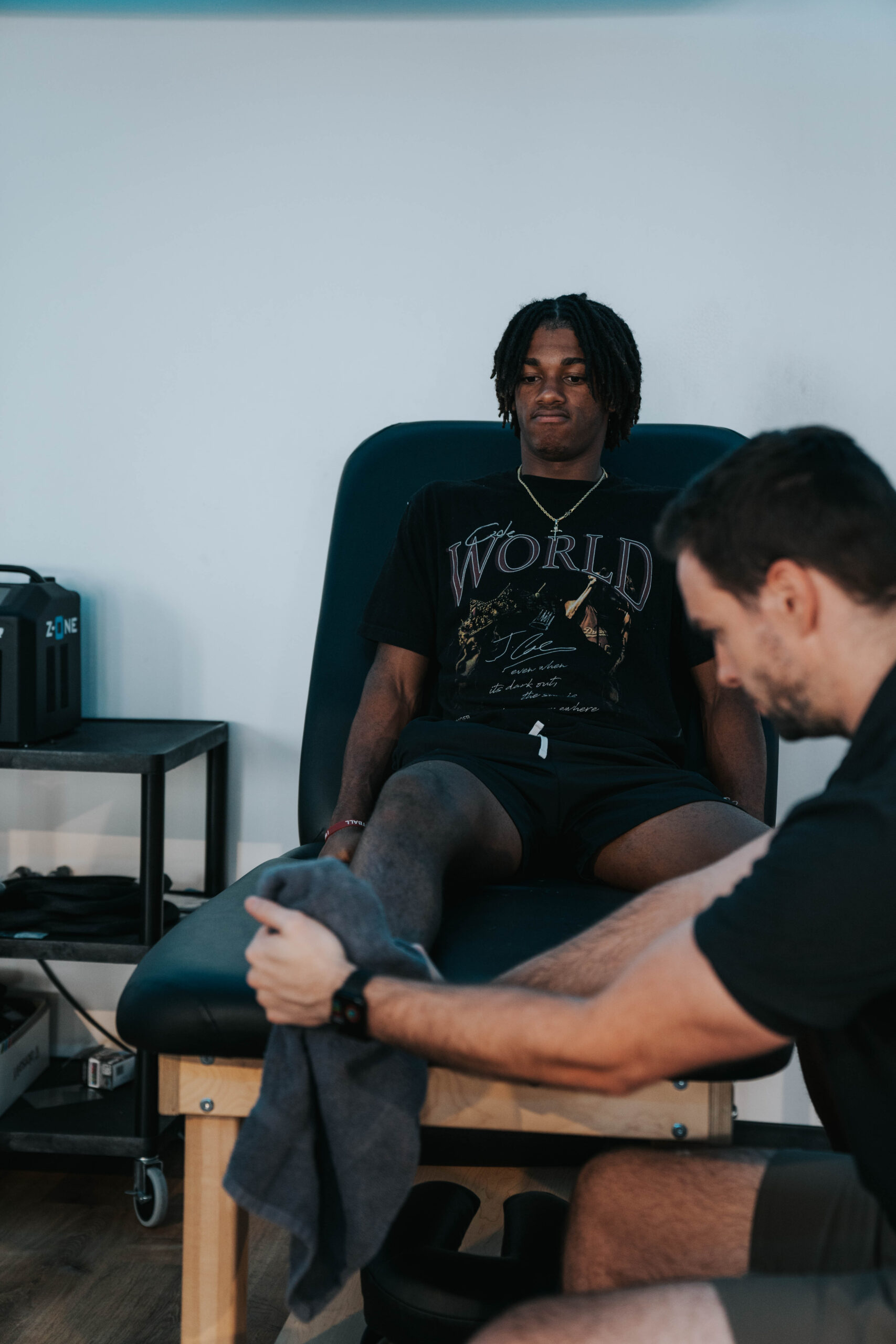Physical therapy has been a part of athletes’ lives for centuries, but the methods and treatments have evolved over the years. In addition to being helpful for athletes, physical therapy can treat a variety of conditions for all kinds of people at different stages of life—from pediatric to geriatric. The use of technology, the focus on prevention, and the use of science-based methods have all helped in the positive evolution of physical therapy (PT). Sports injury physical therapy is just one branch of physical therapy that is focused on the healing process for athletes. Read on to learn 7 FAQs about sports injury physical therapy.
- How is sports injury physical therapy different from regular PT? Both regular physical therapy and sport injury physical therapy can help people to recover from injuries and to improve their bodies’ movement and physical function. Regular PT is usually implemented for musculoskeletal injuries, neurological conditions, cardiovascular conditions, respiratory conditions, and a variety of pediatric or geriatric conditions. When it comes to sports injury PT, this kind of therapy is specifically designed to help athletes recover from injuries sustained in sports or to prevent sports injuries from occurring. Sports injury physical therapy can also help athletes to return to their sport safely.
- How can I prevent a sports injury? While there is no guarantee that an athlete can prevent a sports injury, there are steps to take to help with reducing the risk of injury. Some activities for risk-reduction include warm ups, cool downs, and stretches. Ensuring that you’re using proper form, wearing necessary protective gear, and staying hydrated during sports can help as well.
- Who should see a sports physical therapist? If you’re an athlete who has sustained an injury, you should see a sports physical therapist. Sports physical therapists can help athletes by designing a plan to help recover, heal, and return to sport. However, all athletes who are seeking to prevent injuries from sports would benefit from sessions of sports injury PT.
- What is a sports injury risk assessment? A sports injury risk assessment is a great way for athletes to develop an understanding of the biomechanical risk factors that can affect athletes. A sports injury risk assessment aims at identifying movement dysfunction and limitations before they become a problem for an athlete. At ROI, an assessment like this involves a team of experts that will do a comprehensive athlete evaluation that helps identify unique risks. This evaluation might assess factors like an athlete’s medical history, strength, agility, power, flexibility, and reflexes. From there, the team develops a program tailored to the individual athlete that focuses on areas of need.
- In addition to recovery, what are some other benefits of sports injury physical therapy? This specific type of PT can help athletes with reduction of pain and inflammation, which can be a chronic issue. Completing sports injury PT can also help to improve athletes’ range of motion, strength, flexibility, and functional movement. Sports injury therapists can also help to educate and inform athletes about how to prevent further injury.
- How will I know when I’m ready to get back to playing sports? The comeback can often be greater than the setback. ROI offers return to sport testing, a methodology that simulates game play and allows performance experts to assess an athlete’s overall fitness level, strengths, and weaknesses. The experts at ROI also assess an athlete’s tissue quality, joint mobility, movement function, and psychological readiness in return to sport testing.
- What are some of the treatments used in sports injury physical therapy? A sports injury physical therapist might implement treatments that include manual therapy such as massage, stretching, and joint mobilization. Modalities that are used to reduce pain and problems in athletes include heat, ice, ultrasound, and electrical stimulation. Exercise therapy is a major part of sports injury PT as well, that will include emulating your sport and the environment. The experts at ROI often incorporate more healing modalities such as soft tissue mobilization, scraping, cupping, and dry needling.
An integrated approach. When it comes to helping athletes heal, the team at ROI aims to use an integrated, holistic approach. Recovery revolves around the whole athlete, and we include expert insight from a team of professionals. We focus on physical rehabilitation, focused nutrition, and hands-on healing processes to help an athlete fully recover. From prevention to rehab and recovery, ROI can help athletes. Our holistic, proactive, and science-based approach to health can help athletes at all stages. Working with professional sports physical therapists can help you to understand about being prone to injuries. They can also help instill knowledge and techniques to help with injury prevention. Amazing athletes require a lot of power, energy, and strength from their bodies; injuries are simply a risk that all athletes face.
The experts at ROI offer pre-op rehab, post-op rehab, and all kinds of physical therapy services that can help athletes to reach their highest level of performance. Schedule an evaluation with one of our sports physical therapists by calling 512-962-9141.

